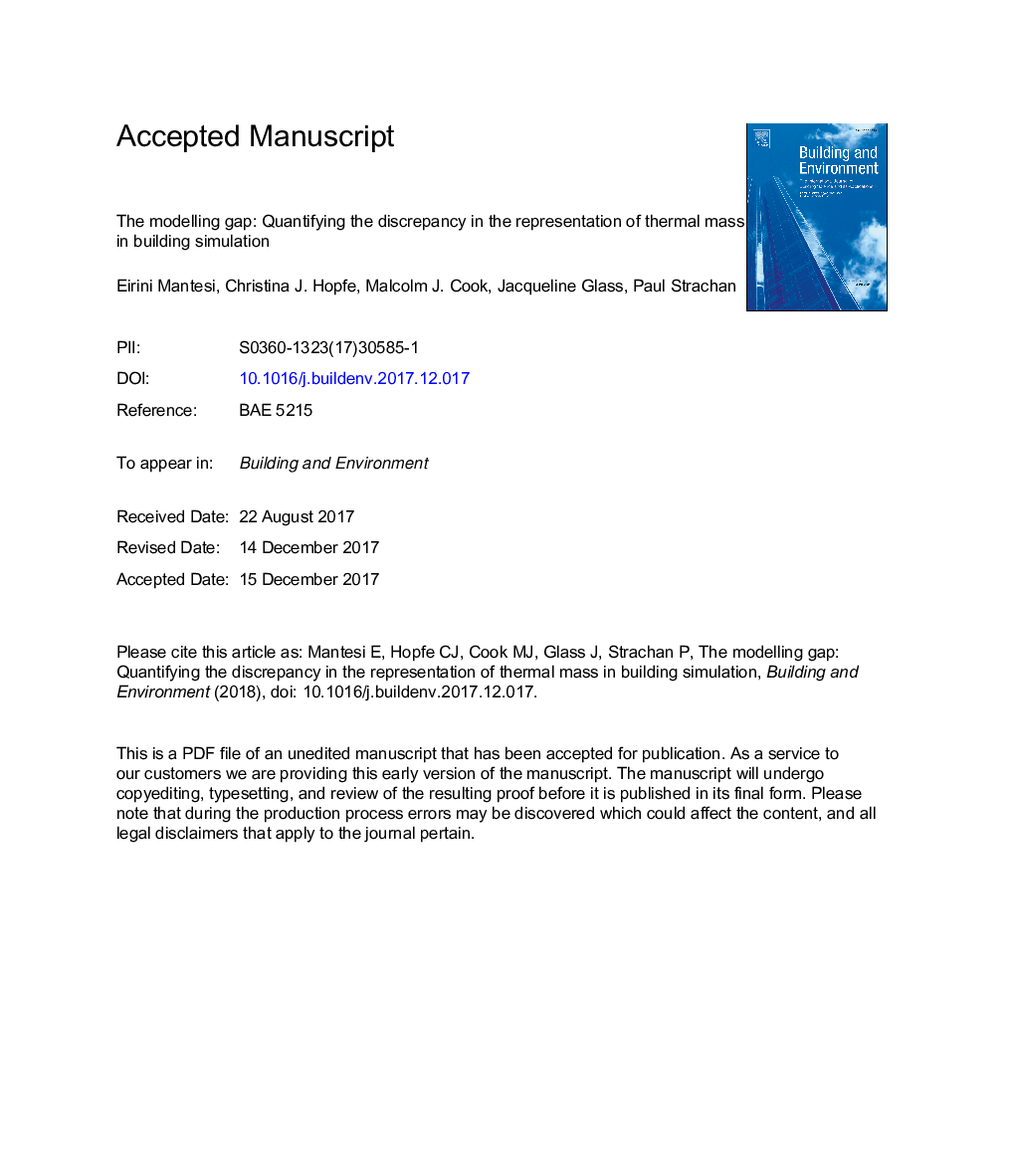| کد مقاله | کد نشریه | سال انتشار | مقاله انگلیسی | نسخه تمام متن |
|---|---|---|---|---|
| 6698014 | 1428361 | 2018 | 55 صفحه PDF | دانلود رایگان |
عنوان انگلیسی مقاله ISI
The modelling gap: Quantifying the discrepancy in the representation of thermal mass in building simulation
دانلود مقاله + سفارش ترجمه
دانلود مقاله ISI انگلیسی
رایگان برای ایرانیان
کلمات کلیدی
موضوعات مرتبط
مهندسی و علوم پایه
مهندسی انرژی
انرژی های تجدید پذیر، توسعه پایدار و محیط زیست
پیش نمایش صفحه اول مقاله

چکیده انگلیسی
There is a need for accurate performance prediction when designing new buildings. This is challenging in particular when using advanced or new methods (such as ICF), that are not yet well researched. Building Performance Simulation (BPS) is often used to predict the thermal performance of buildings. Large discrepancies can occur in the simulation predictions provided by different BPS tools. In many cases assumptions embedded within the tools are outside of the modeller's control. At other times, users are required to make decisions on whether to rely on the default settings or to specify the input values and algorithms to be used in the simulation. This paper investigates the “modelling gap”, the impact of default settings and the implications of the various calculation algorithms on the results divergence in thermal mass simulation using different tools. ICF is compared with low and high thermal mass constructions. The results indicated that the modelling uncertainties accounted for up to 26% of the variation in the simulation predictions.
ناشر
Database: Elsevier - ScienceDirect (ساینس دایرکت)
Journal: Building and Environment - Volume 131, March 2018, Pages 74-98
Journal: Building and Environment - Volume 131, March 2018, Pages 74-98
نویسندگان
Eirini Mantesi, Christina J. Hopfe, Malcolm J. Cook, Jacqueline Glass, Paul Strachan,